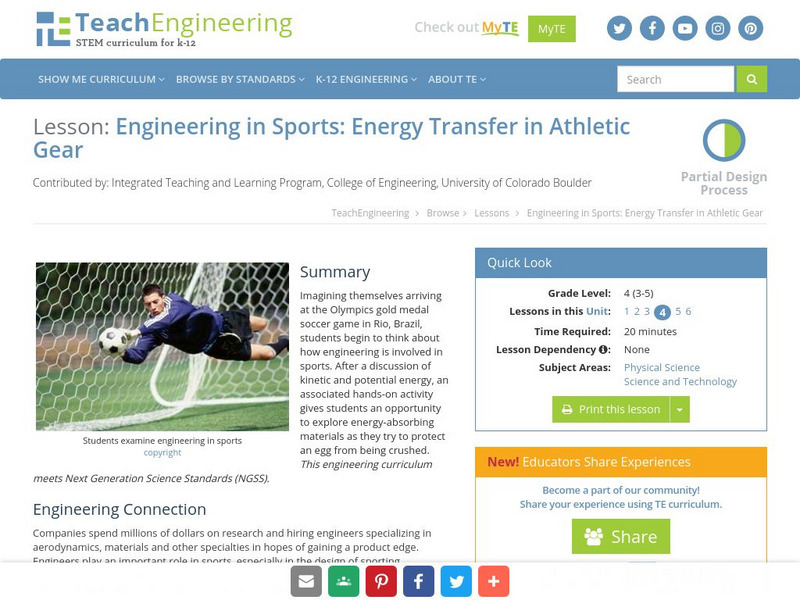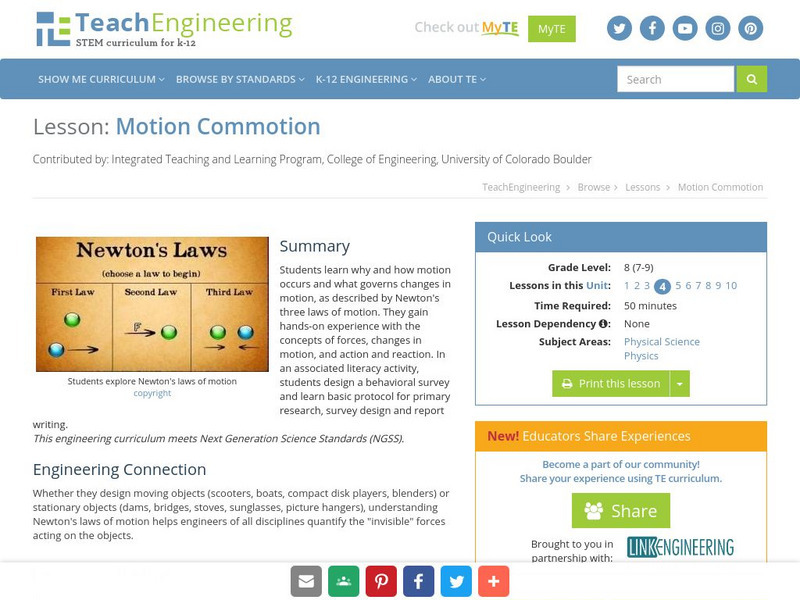Hi, what do you want to do?
TeachEngineering
Teach Engineering: What Is Energy?
With an introduction to the ideas of energy, students discuss specific types of energy and the practical sources of energy. Hands-on activities help them identify types of energy in their surroundings and enhance their understanding of...
TeachEngineering
Teach Engineering: Work and Power: Waterwheel
Investigating a waterwheel illustrates to students the physical properties of energy. They learn that the concept of work, force acting over a distance, differs from power, which is defined as force acting over a distance over some...
E-learning for Kids
E Learning for Kids: Science: Pirates: What Is Energy Conversion?
This lesson covers the different types of energy, the definitions of kinetic and potential energy, how energy can be converted into different forms, and the law of conservation of energy.
University of Colorado
University of Colorado: Ph Et Interactive Simulations: Masses & Springs
An interactive simulation that teaches about springs, Hooke's Law, and conservation of energy observing changes in kinetic, potential, and thermal energy by adjusting the stiffness and damping of springs holding various masses. This...
Sophia Learning
Sophia: Energy: Lesson 4
This lesson will present the different states of energy and how they affect living things. It is 4 of 7 in the series titled "Energy."
TeachEngineering
Teach Engineering: Clean Energy: Hydropower
Hydropower generation is introduced to students as a common purpose and benefit of constructing dams. Through an introduction to kinetic and potential energy, students come to understand how a dam creates electricity. They also learn the...
Sophia Learning
Sophia: Energy: Machines, Motion and Light
An introductory lesson describing the definition of energy, and highlighting different sources of usable energy.
CK-12 Foundation
Ck 12: Physical Science: Energy Conversion
[Free Registration/Login may be required to access all resource tools.] Decribes how energy changes from one form to another and energy changes between kinetic and potential energy.
TeachEngineering
Teach Engineering: A River Ran Through It
Young scholars learn how water is used to generate electricity. They investigate water's potential-to-kinetic energy transformation in hands-on activities about falling water and waterwheels. During the activities, they take...
NBC
Nbc Learn: Science of Golf
NBC Learn, in partnership with the United States Golf Association, uncovers the science, technology, engineering and math behind the game of golf. For lesson plans provided by the National Science Teachers Association, open the video and...
Sophia Learning
Sophia: Energy: Machines, Motion and Light: Lesson 3
This lesson will present how light and motion energy can be used to power machines. It is 3 of 4 in the series titled "Energy: Machines, Motion and Light."
Sophia Learning
Sophia: Energy: Machines, Motion and Light: Lesson 4
This lesson will present how light and motion energy can be used to power machines. It is 4 of 4 in the series titled "Energy: Machines, Motion and Light."
Sophia Learning
Sophia: Energy: Machines, Motion and Light: Lesson 2
This lesson will present how light and motion energy can be used to power machines. It is 2 of 4 in the series titled "Energy: Machines, Motion and Light."
The Tech Interactive
The Tech Museum of Innovation: Save the Hiker [Pdf]
Can you build a device that will deliver life-saving treatment to someone in a hazardous situation? During this lesson, students will learn how energy is converted and transferred between objects. Working in groups and through the...
NC State University
The Engineering Place: Roller Coasters [Pdf]
A lesson where students construct a roller coaster and test it under different conditions to learn about force and motion.
Physics Classroom
The Physics Classroom: Work, Energy, and Power: Internal vs. External Forces
Through illustrated examples and interactive examples, students learn about the two categories of forces are referred to as internal forces and external forces.
Science and Mathematics Initiative for Learning Enhancement (SMILE)
Smile: Potential Energy: How Is It Related to Kinetic Energy
After creating three different ramps with various heights, young scholars will release toy cars from the tops of each ramp. Based on the elementary age level, students will collect data and analyze it.
Physics Classroom
The Physics Classroom: Motion of a Mass on a Spring
This tutorial investigates the motion of a mass on a spring and how a variety of quantities change over the course of time. Such quantities will include forces, position, velocity and energy - both kinetic and potential energy. Take the...
TeachEngineering
Teach Engineering: Engineering in Sports
Imagining themselves arriving at the Olympic gold medal soccer game in Beijing, students begin to think about how engineering is involved in sports. After a discussion of kinetic and potential energy, an associated hands-on activity...
TeachEngineering
Teach Engineering: Motion Commotion
Students learn why and how motion occurs and what governs changes in motion, as described by Newton's three laws of motion. They gain hands-on experience with the concepts of forces, changes in motion, and action and reaction. In an...
TeachEngineering
Teach Engineering: Dams
Through eight lessons, students are introduced to many facets of dams, including their basic components, the common types (all designed to resist strong forces), their primary benefits (electricity generation, water supply, flood...
Sophia Learning
Sophia: Kinetic & Potential Energy
This lesson explains how kinetic and potential energy are related.
Annenberg Foundation
Annenberg Learner: Design a Roller Coaster
An interactive lesson where students design and build their own virtual roller coaster. Choose the height of the hills. the shape of the hills. and loop to find out if you successfully used physics concepts to pass the safety and fun...
Science Buddies
Science Buddies: Teaching Engineering Design With an Egg Drop
Middle schoolers build a device to protect an egg and prevent it from breaking when dropped.





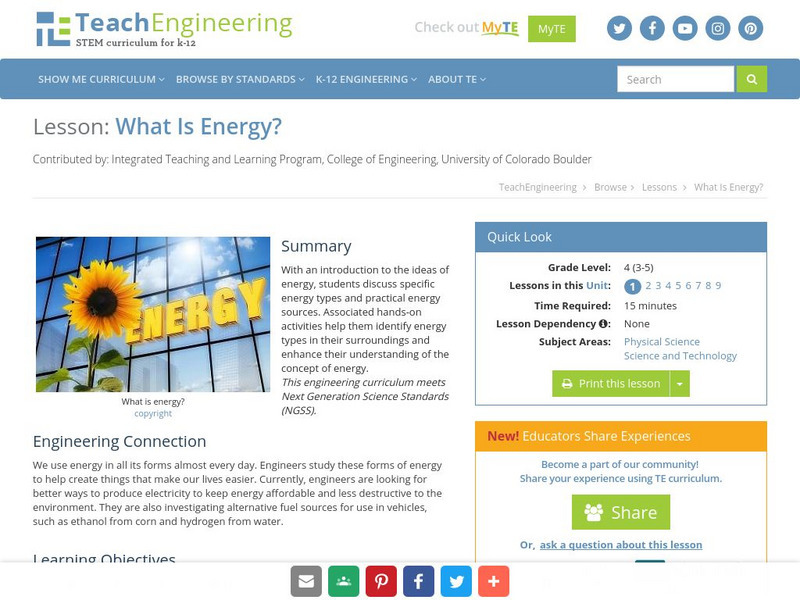



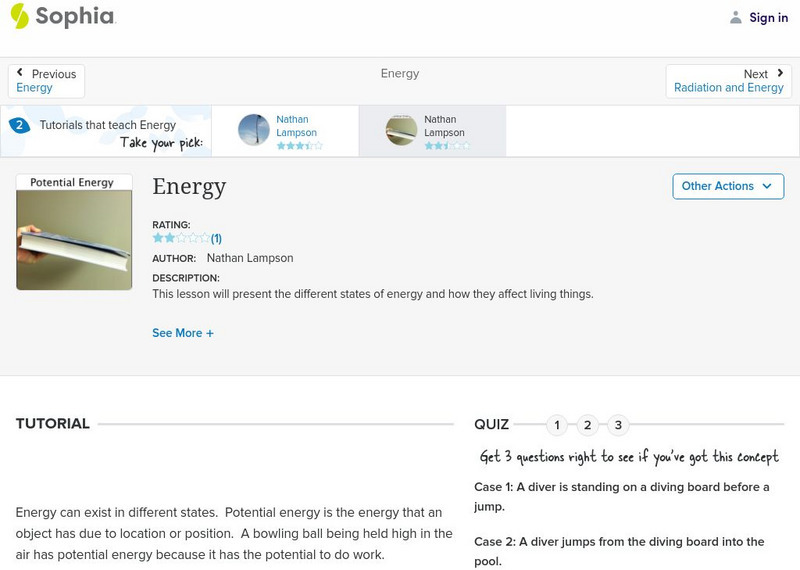
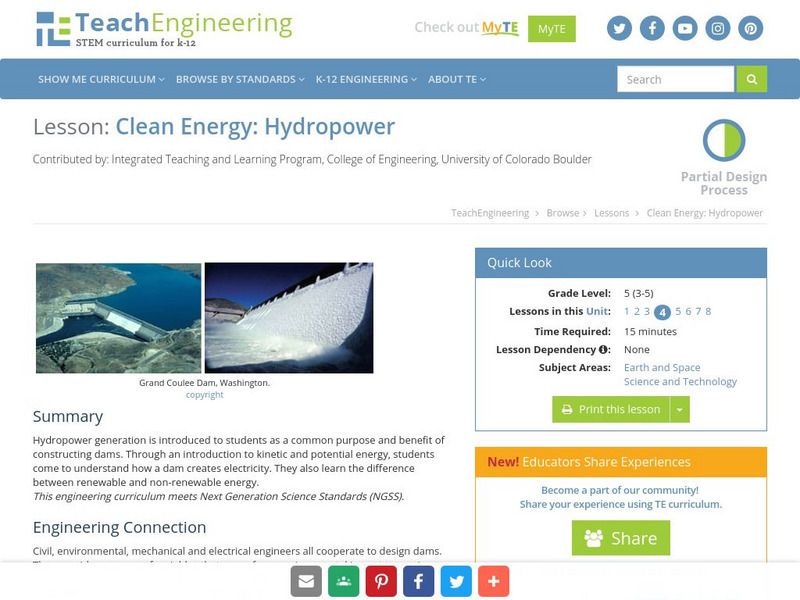
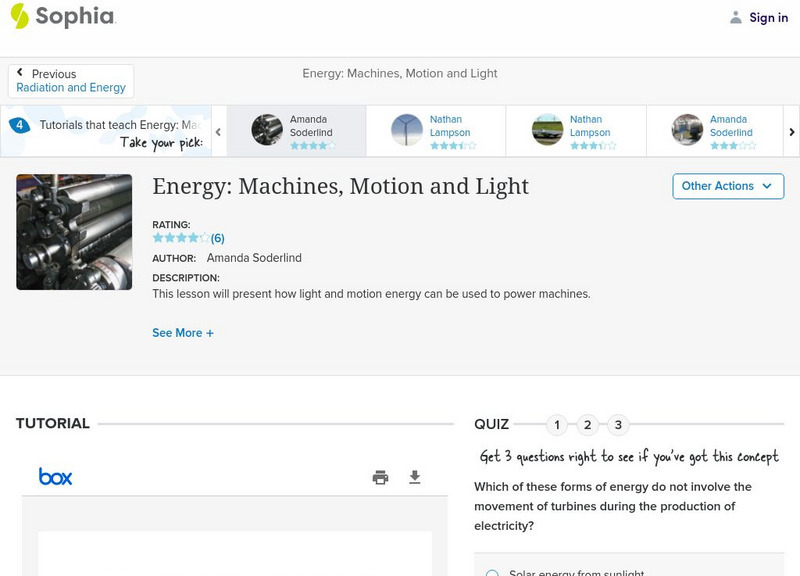
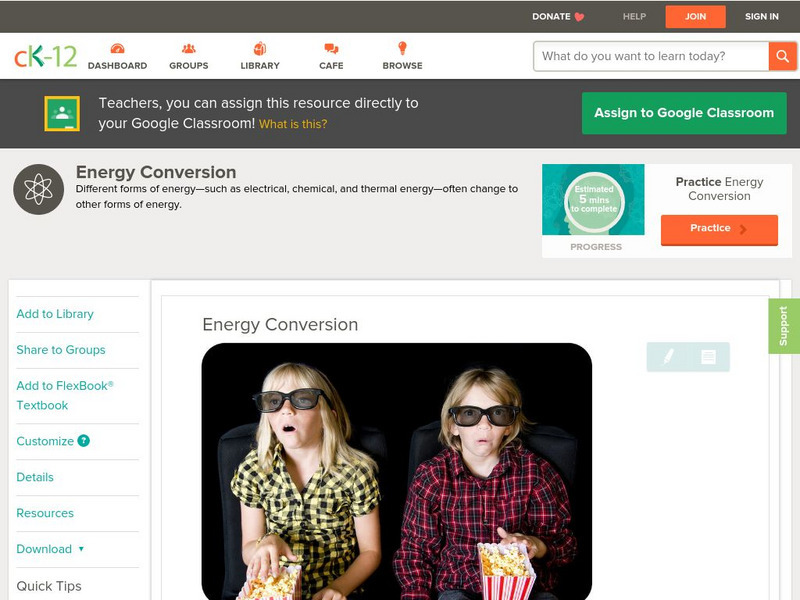
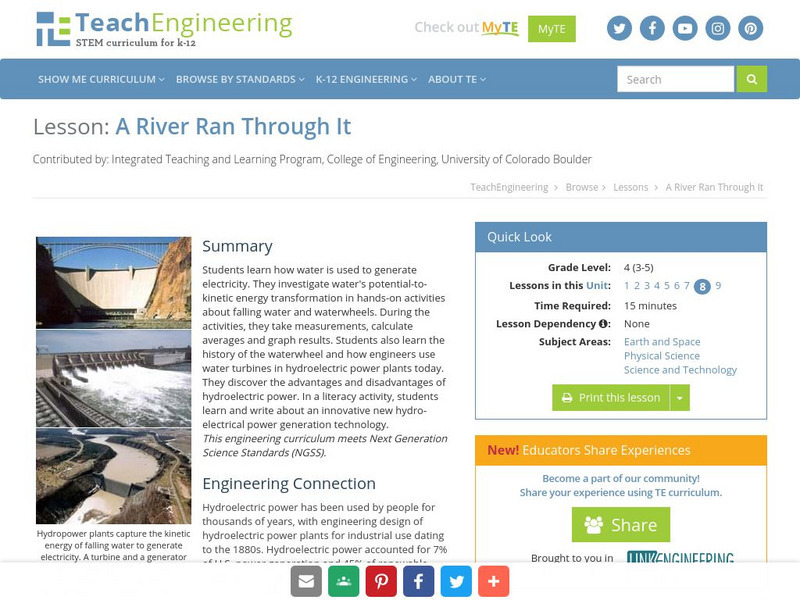
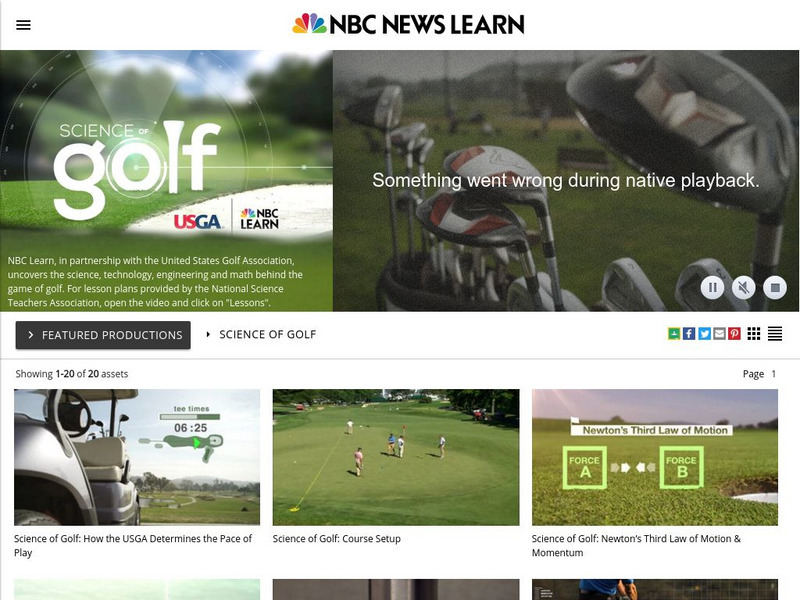
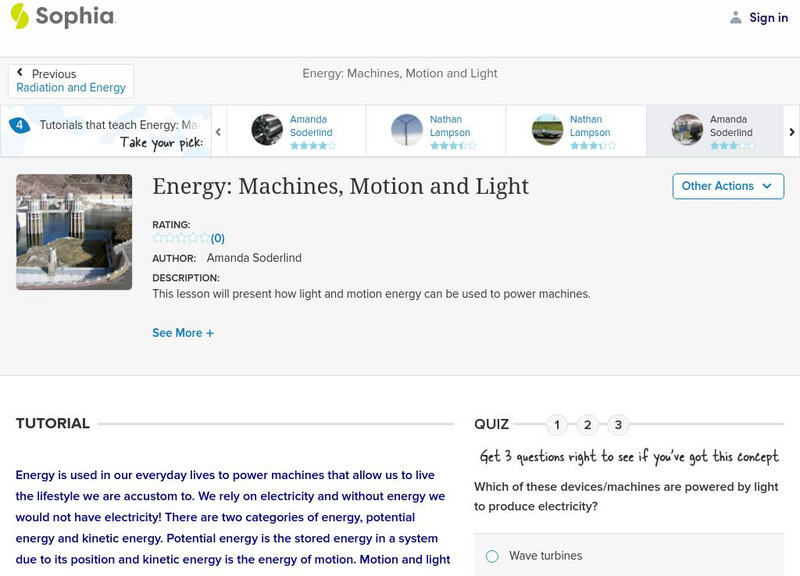
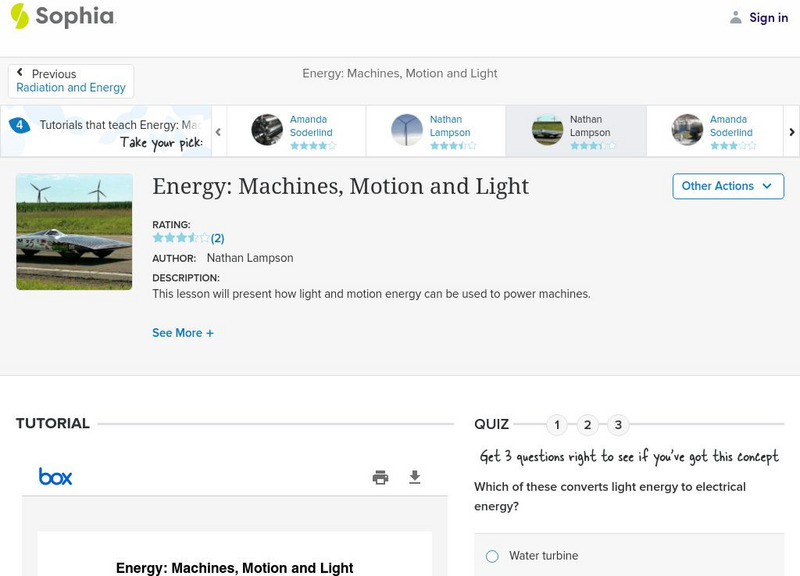
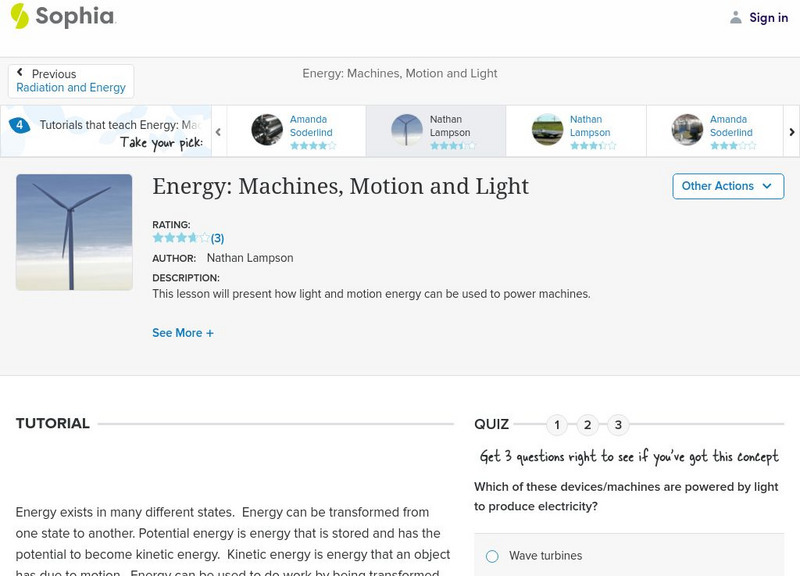
![The Tech Museum of Innovation: Save the Hiker [Pdf] Lesson Plan The Tech Museum of Innovation: Save the Hiker [Pdf] Lesson Plan](https://static.lp.lexp.cloud/images/attachment_defaults/resource/large/FPO-knovation.png)

